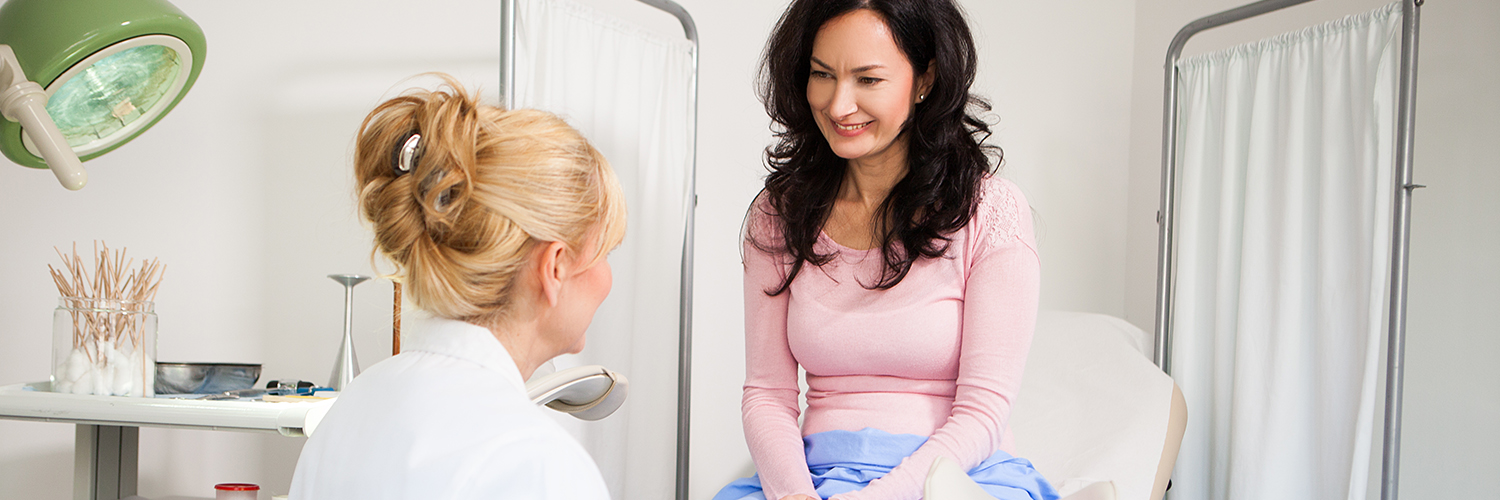Pelvic exams and Pap smears are important tools that empower women to take care of their reproductive health. These routine screenings play a vital role in detecting issues early, like cervical cancer and HPV. Knowing what to expect during these procedures, how often you need them, and why they’re recommended can help you get the most out of these preventive tests.
What Is a Pelvic Exam vs. Pap Smear?
While often confused, pelvic exams and Pap smears are distinct procedures:
- A pelvic exam is a physical examination of the reproductive organs and surrounding structures.
- A Pap smear is a specific test that collects cells from the cervix to check for abnormalities.
Pelvic Exam
A pelvic exam involves inspection of the reproductive system to evaluate the health of the uterus, ovaries, fallopian tubes, cervix and vagina.
This exam helps detect abnormalities such as cysts, fibroids or signs of infection. It’s an integral part of a woman’s routine healthcare because it allows healthcare providers to monitor reproductive health and screen for conditions that sometimes require additional tests or treatments.
A Pap smear and a pelvic exam are sometimes done during the same visit to save time and provide the most detailed results.
Pap Smear
A Pap smear (named after the doctor who popularized the test, Dr. Papanikolaou) specifically focuses on the cervix, which is located at the end of the uterus and connected to the vagina.
This test can detect abnormal cervical cells that can sometimes indicate precancerous or cancerous changes. It can also identify early signs of abnormalities caused by human papillomavirus (HPV) infection.
During a Pap smear, a speculum is gently inserted into the vagina to visualize the cervix. A small brush or spatula is then used to collect cells from the cervix, which are sent to a laboratory for analysis.
FAQs About Pap Smears
When should you get a Pap smear? How frequently do you need one?
Routine Pap smears should start at age 21, regardless of sexual activity. If their last tests were normal, it’s recommended that women aged 21 to 29 get a Pap smear every three years.
From ages 30 to 65, women should have a Pap smear combined with an HPV test every five years. Most women over 65 can discontinue Pap smears if they have had regular screenings with normal results.
Why is a Pap smear done? What do they test for?
Pap smears are crucial for early detection of cervical cancer as well as other conditions. The test primarily checks for abnormal changes in cervical cells that could indicate HPV infection, dysplasia (precancerous changes) or cervical cancer.
Early detection through Pap smears significantly improves treatment outcomes and survival rates.
What is it like to get a Pap smear?
Getting a Pap smear is a quick and generally painless procedure. During the exam, you will lie on an examination table with your feet placed in stirrups. A speculum is gently inserted into the vagina to provide a clear view of the cervix.
You might experience mild discomfort or pressure during the procedure, but it typically lasts only a few minutes.
Can you get a Pap smear during your period?
It’s generally recommended to schedule your Pap smear when you are not menstruating because menstrual blood can interfere with the accuracy of the test results.
If you have a scheduled Pap smear and unexpectedly start your period, inform your healthcare provider. They may reschedule your appointment to ensure the test is accurate.
FAQs About Pelvic Exams
What is a pelvic exam procedure like?
During the exam, you will lie on an examination table and place your feet in stirrups. The doctor will visually inspect the external genital area for abnormalities, then use a speculum to gently widen the vagina to view the cervix and collect samples for testing.
The doctor may also perform a manual examination by inserting gloved fingers into the vagina while pressing on the abdomen with the other hand to feel the uterus and ovaries. The entire procedure typically takes only a few minutes.
When should you have your first pelvic exam?
Routine pelvic exams are usually recommended starting at age 21, or sooner if there are health issues or symptoms that need to be addressed.
Does a pelvic exam hurt?
Most women find that pelvic exams cause only mild discomfort or pressure. The speculum insertion can feel a bit uncomfortable, but it shouldn’t be painful.
Should you have a pelvic exam during pregnancy?
Pelvic exams during pregnancy are common and safe. They are performed not only to assess the health of your reproductive organs, but also to check on the progress of your pregnancy.
These exams can help determine the baby’s position, track cervical changes, and identify any potential issues that might affect the pregnancy or delivery.
Understanding Your Results
Here are explanations for possible results from a Pap smear:
- Normal: No abnormal cells were found, and routine screening is recommended as per guidelines.
- Abnormal: Abnormal cells were detected, which might require more testing or a follow-up appointment.
- HPV positive: The presence of HPV was detected. Depending on the type of HPV and other factors, your doctor will recommend appropriate follow-up, which can include more frequent screenings, colposcopy (further visual examination of the cervix) or biopsy.
- Precancerous or cancerous changes: Abnormalities in the cells of the cervix could suggest precancerous changes or cervical cancer, meaning further testing is needed.
Here are explanations for possible results from a pelvic exam:
- Normal: Everything appears structurally normal; no signs of infections, growths or abnormalities were detected in the reproductive organs.
- Abnormal discharge or infections: Presence of unusual discharge or inflammation may indicate infections like yeast infections, bacterial vaginosis or sexually transmitted infections (STIs).
- Abnormal growths: Detection of growths such as fibroids, cysts or polyps can indicate benign conditions, but they sometimes require further monitoring or treatment.
- Pregnancy-related findings: Changes in the cervix or uterus size can confirm pregnancy and help assess its progress.
- Signs of hormonal imbalances: Variations in the condition of the vaginal lining or cervix might indicate hormonal imbalances that could affect menstrual cycles or fertility.
Regular Pap smears and pelvic exams are a cornerstone of preventive healthcare for women. During a Well Women visit at Stony Brook Medicine Women’s Health, we emphasize the importance of routine screenings to detect cervical abnormalities as early as possible. Early detection through Pap smears and pelvic exams allows for timely intervention and significantly improves treatment outcomes for cervical health.












